Epson's AR Glasses: Lightweight, Bright, but Face Image Distortion and Limited Features

If you have a pair of Epson AR video glasses, you may encounter some issues during startup. The screen displays for a few seconds, but then starts flickering and the image disappears or becomes distorted.
These AR video glasses come with dual OLED display units with a resolution of 1280x720x2. They support HDMI and Type-C DP Alt input functions and offer support for 3D in left-right format, but they do not support Nvidia's 3D certification. This means you won't be able to enjoy the 3D visual gaming features of Nvidia cards. However, the glasses come with a gyroscope and a 5-megapixel camera, allowing you to connect them to an Android phone for augmented reality (AR) experiences.
Overall, the glasses are well-equipped.
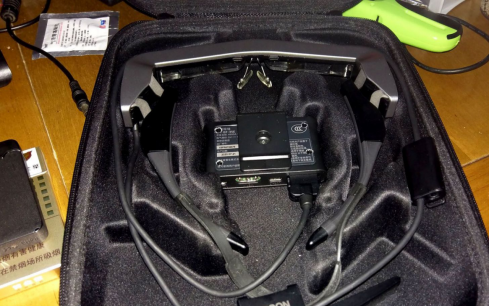
The design of the glasses has a cool and appealing look.
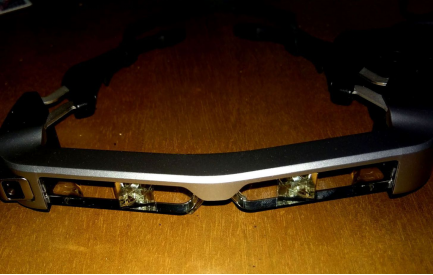
They are compact in size and feel lightweight when held in hand. In comparison to Sony HMZ-T3, which is quite heavy, these glasses are in a completely different league. Take a look at the two comparison images:
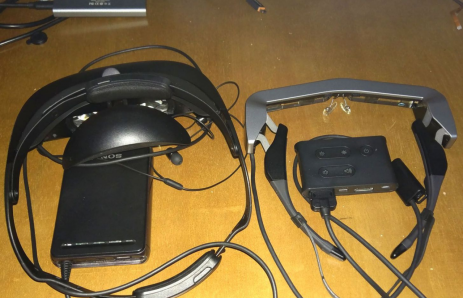
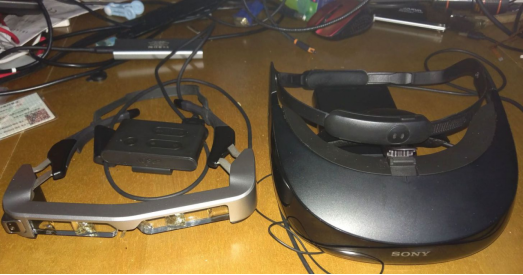
During the startup test, you may notice that the malfunctions match the described issues. The controller tends to generate significant heat, suggesting that the problem may lie with the control box. There are four screws beneath the sticker, which are securely attached and not easily removable. It is advisable to carefully cut the sticker with a small knife and later seal it back with adhesive once the issue is resolved:

After dismantling the mainboard, you'll observe that the front side is densely packed with components. On the backside, apart from the buttons and LEDs, there are a few power ICs. Pay attention to the small IC on the left, which is the Texas Instruments AD circuit PCM1770. When you power it on again, you might notice significant heating from the HDMI processing chip located next to the main control chip LCMX02 (I forgot the specific model used for HDMI and DP Alt switching). Suspecting a soldering issue, you can apply flux and use a hot air gun for about ten seconds. Gently pushing it with tweezers should reset it automatically, indicating a successful soldering. After cooling down, perform a startup test. Although the heat is still considerable, the malfunction should no longer occur. It seems to be a shared issue with Sony's T3, suggesting a design flaw where the heating components lack proper cooling measures.
Next, attach a heat sink and add a 5V 1000uF ruby capacitor to the power section. Reassemble the device:
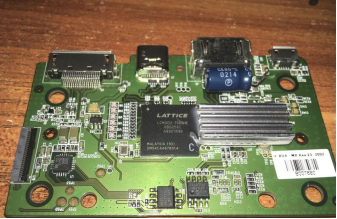
During usage, you may notice that the screen has a narrow viewing angle. It's equivalent to watching a 43-inch TV from a distance of 3 meters, which is far from the effect of T3's 120 inches. However, the advantage lies in the smaller screen size, resulting in smaller pixels that are not visible to the naked eye. In contrast, Sony T3's 1280x720 resolution exhibits slight pixelation. Moreover, the brightness of the screen is much higher, and the glasses are more lightweight, making them more comfortable for extended wear. Due to the higher brightness, there's no need for a fully enclosed structure like T3. When watching a horror movie alone, the difference becomes evident: T3 isolates you from the surroundings, creating suspense and fear, while BT35 allows you to watch the movie while remaining aware of your surroundings, eliminating any concerns.
During usage, you may also encounter image distortion. When viewing the screen with one eye, everything appears normal. However, with both eyes, you'll notice a protrusion in the center of the image, with a groove of about 5 centimeters (relative to a 43-inch screen) on the top and bottom. The 3D mode improves the situation slightly, but HMZ-T3 doesn't have this issue at all.
Furthermore, due to the fixed interpupillary distance, it places high demands on your eyes. The glasses need to be tightly pressed against your eyes, precisely in the center. Slight deviations towards the edges will result in a blurred image.
The grid pattern displayed when captured with a phone demonstrates satisfactory results:
By connecting the Epson Moverio Link and a USB camera app to your phone, and then using the Type-C data cable, you can display the phone's screen without the need for an external power source. This setup allows partial functionality switching through the phone and utilization of the glasses' camera. However, the image tends to be slightly dim, which may be due to software-related issues.
When compared to Sony HMZ-T3, the Epson glasses have several advantages and disadvantages:
1. They are lightweight and comfortable to wear, but they suffer from image distortion.
2. The brightness is significantly higher, resulting in a clear image, but the screen size is too small to clearly see fine details.
3. The transparent design allows you to observe your surroundings while watching the screen, and others may assume you're simply wearing peculiar glasses since they can't see what content is being displayed.
4. You can connect them to your phone using the official app, but the supported functionalities are limited.
5. Switching between modes is convenient; simply press and hold a combination of buttons to switch between 2D and 3D modes. Unlike the T3, you don't need to navigate through multiple layers of menus. However, the glasses do not support the 3D visual mode of graphics cards. Even if you use iZ3D Driver or the game's built-in 3D mode, you may encounter compatibility issues, such as having two screens but only one mouse cursor moving between them, making it difficult to accurately click on menus or other elements.




